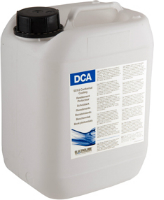

Share
Varnishes can be classified by their chemical composition, each type having its own beneficial qualities for
different PCB environments. Most of the materials used are historically solvent-based, the benefits of which are:
Acrylic coatings combine reasonable price with good environmental protection; they retain clarity and can resistdarkening and hydrolysis during extended outdoor exposure. However they have limited solvent resistance, making them suitable for repair, but not where high chemical resistance is needed.
Main properties:
Unlike acrylics, polyurethane coatings offer excellent chemical resistance and superior protection in harsh
environments. They also maintain flexibility at very low temperatures. And like acrylics, they work over a wide
range of temperatures.
Main properties:
Hybrid coatings are based on a mixture of chemical compositions. This results in different types of coating, adapted to the specific requirements of each application. Electrolube’s SCC3 range are polyurethane-based resins modified with silicone to improve high temperature properties.
These coatings exhibit a wide range of advantages over standard materials and because they are solvent-based, they also provide ease of application, with all the advantages that this entails. The SCC3 range of coatings offers a host of performance benefits without the problems associated with standard silicone coatings, i.e. silicone migration and low molecular weight siloxane effects.
Main properties:
Electrolube also provides other hybrid coating technologies that have been specifically designed for the railway industry.
railway industry. These coatings offer a wide range of protection in hostile and changing environments..
These coatings cure by evaporation of water from the system itself. They are low VOC, replacing most solvents in the waterborne system with water. This improves operator safety and also drastically reduces solvent emissions.
Principales propiedades:
They are another example of hybrid coatings. In this case, different types of chemistry are used to produce a dual cure system, thus avoiding problems with shaded areas of UV light during curing. problems with shaded areas of UV light during curing. UV-curable coatings offer the best cure times in seconds under UV light. This is very beneficial for high performance applications and any shaded areas will cure through the secondary cure system over time. Due to their highly crosslinked structure, when cured, they can be difficult to remove and in some cases may suffer reduced flexibility during thermal changes and therefore should be carefully tested.
© All rights reserved AB Electronic Devices | Legal notice | Privacy policy | Cookie Policy | Shipping and returns policy | Contact